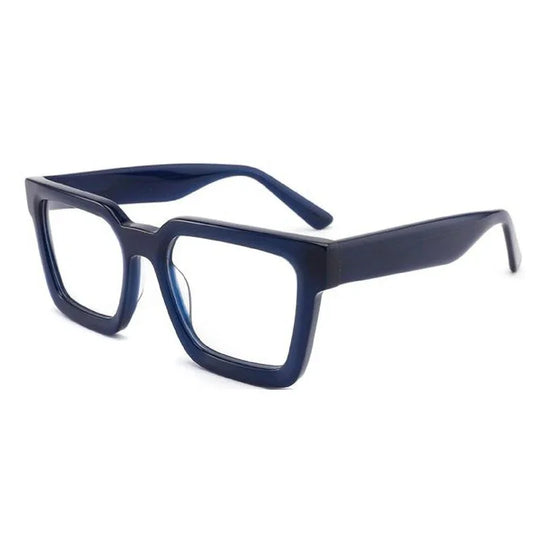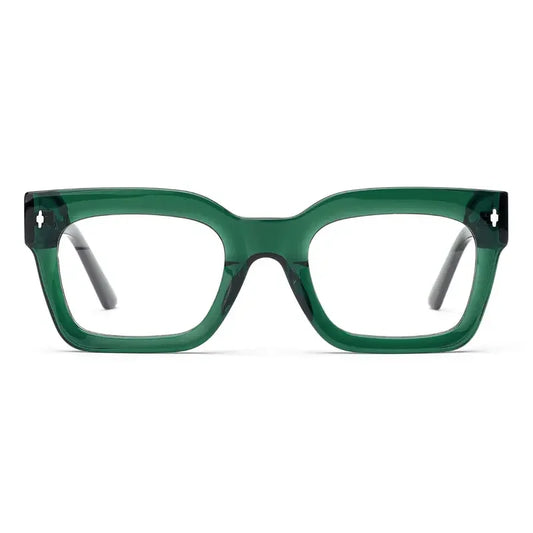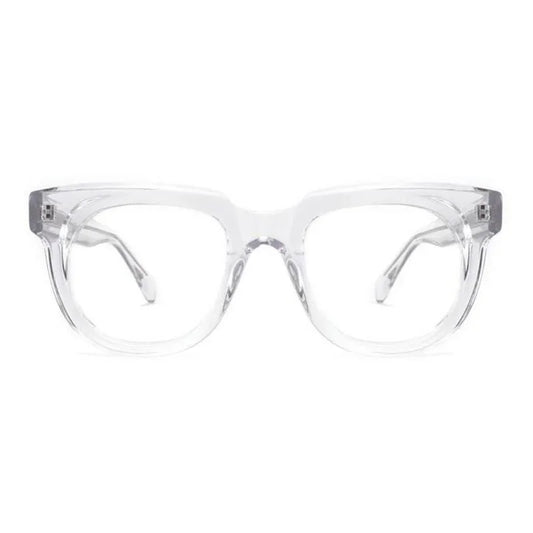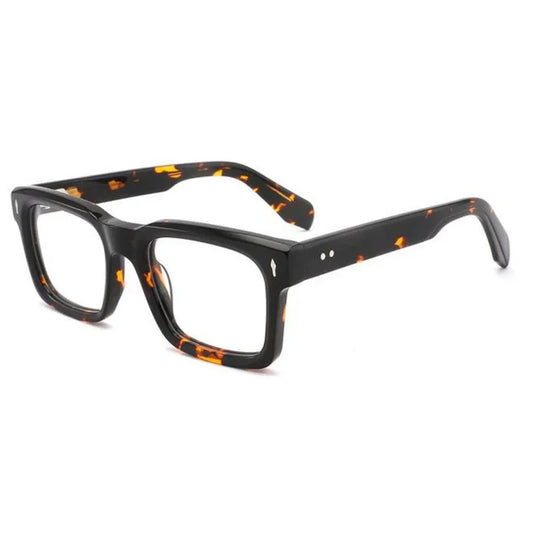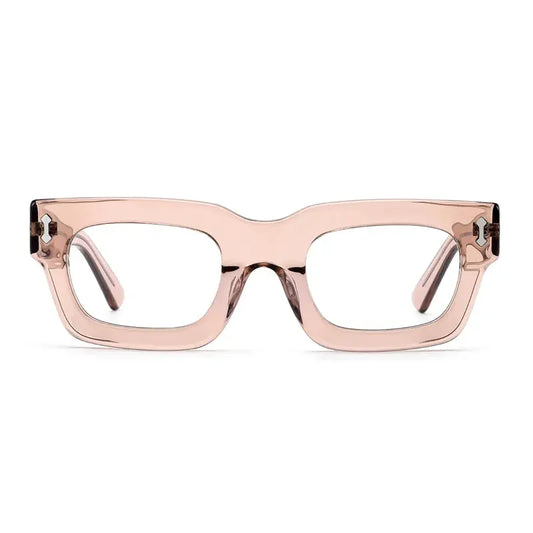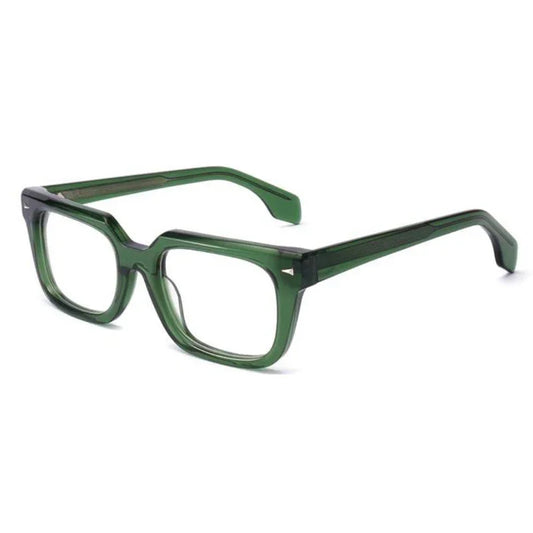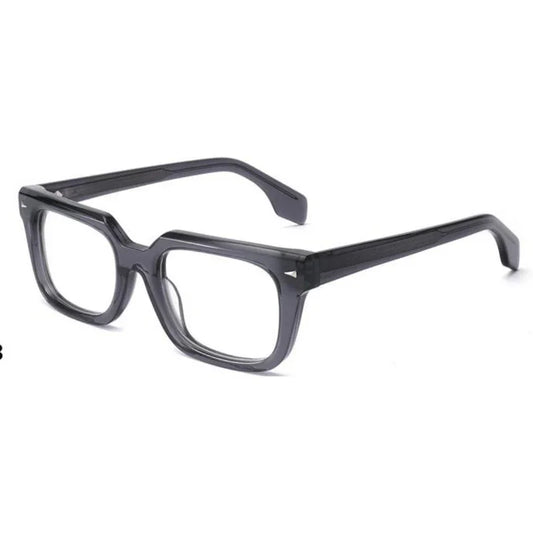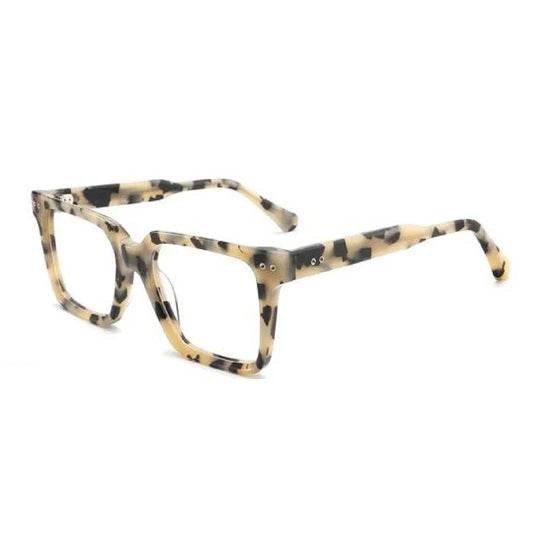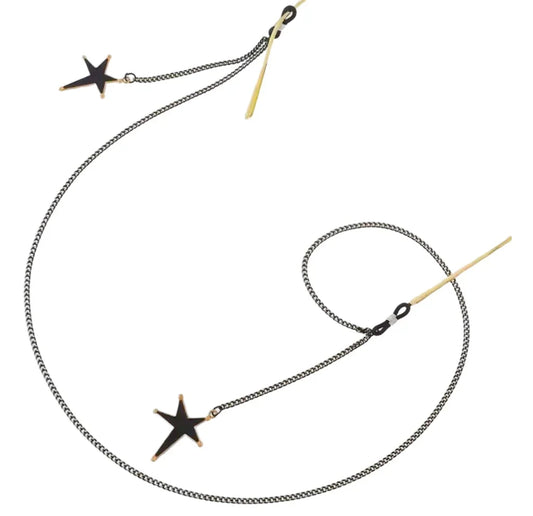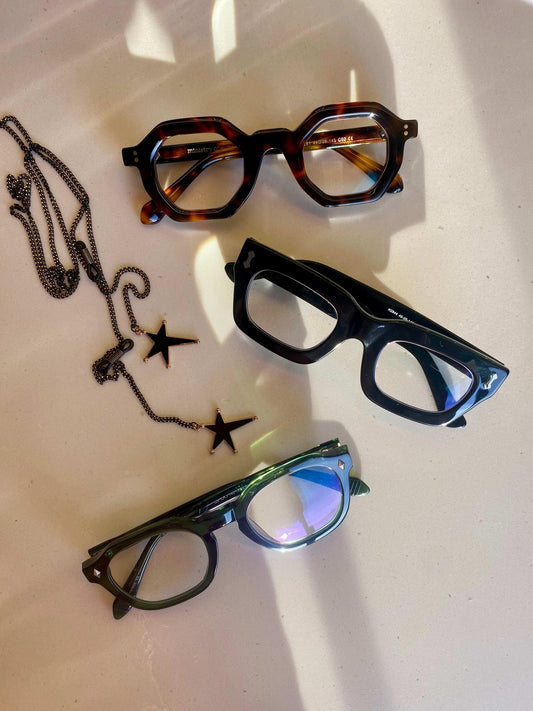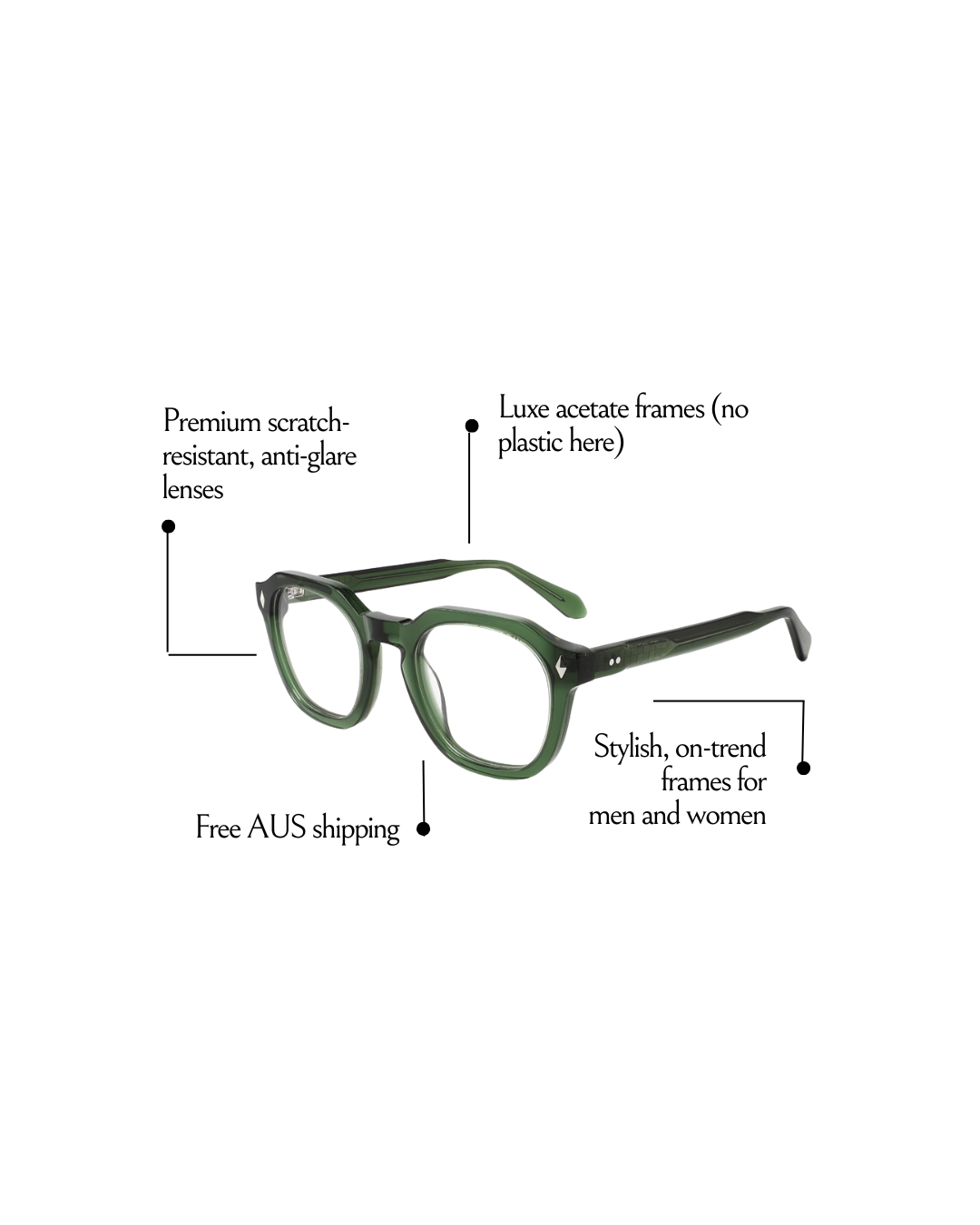
Understanding What Makes Glasses Durable for Everyday Use
People think reading glasses are all the same but the truth is their durability comes down to what they are made from and how they are built. Hard to believe but some frames use materials like titanium and stainless steel that are both super light and strong enough to outlast daily wear. That is not even the most surprising part though because with the right coatings and clever design, a pair of reading glasses can easily survive years of everyday knocks and scratches.
Table of Contents
- The Materials Behind Durable Glasses
- Understanding Lens Coatings And Their Benefits
- The Role Of Frame Design In Durability
- How Care And Maintenance Affect Glass Longevity
Quick Summary
| Takeaway | Explanation |
|---|---|
| Choose strong frame materials | Titanium and stainless steel enhance durability without weight. Polycarbonate and acetate also offer lasting strength and resistance to impacts. |
| Opt for protective lens coatings | Anti-reflective, scratch-resistant, and UV coatings improve visual comfort and extend lens lifespan, ensuring optimal performance. |
| Prioritise intelligent frame design | Full-rim frames offer better protection, while advanced hinges improve flexibility and reduce breakage risk during everyday use. |
| Practice proper care techniques | Use microfibre cloths for cleaning and protective cases for storage to avoid damage and extend the lifespan of your glasses. |
| Regular maintenance is crucial | Professional adjustments and avoiding extreme conditions help preserve structural integrity and optical performance over time. |
The Materials Behind Durable Glasses
Understanding what makes glasses durable starts with examining the fundamental materials used in their construction. When selecting reading glasses that can withstand daily wear and tear, the choice of frame and lens materials becomes critical. Different materials offer unique characteristics that contribute to overall durability and performance.
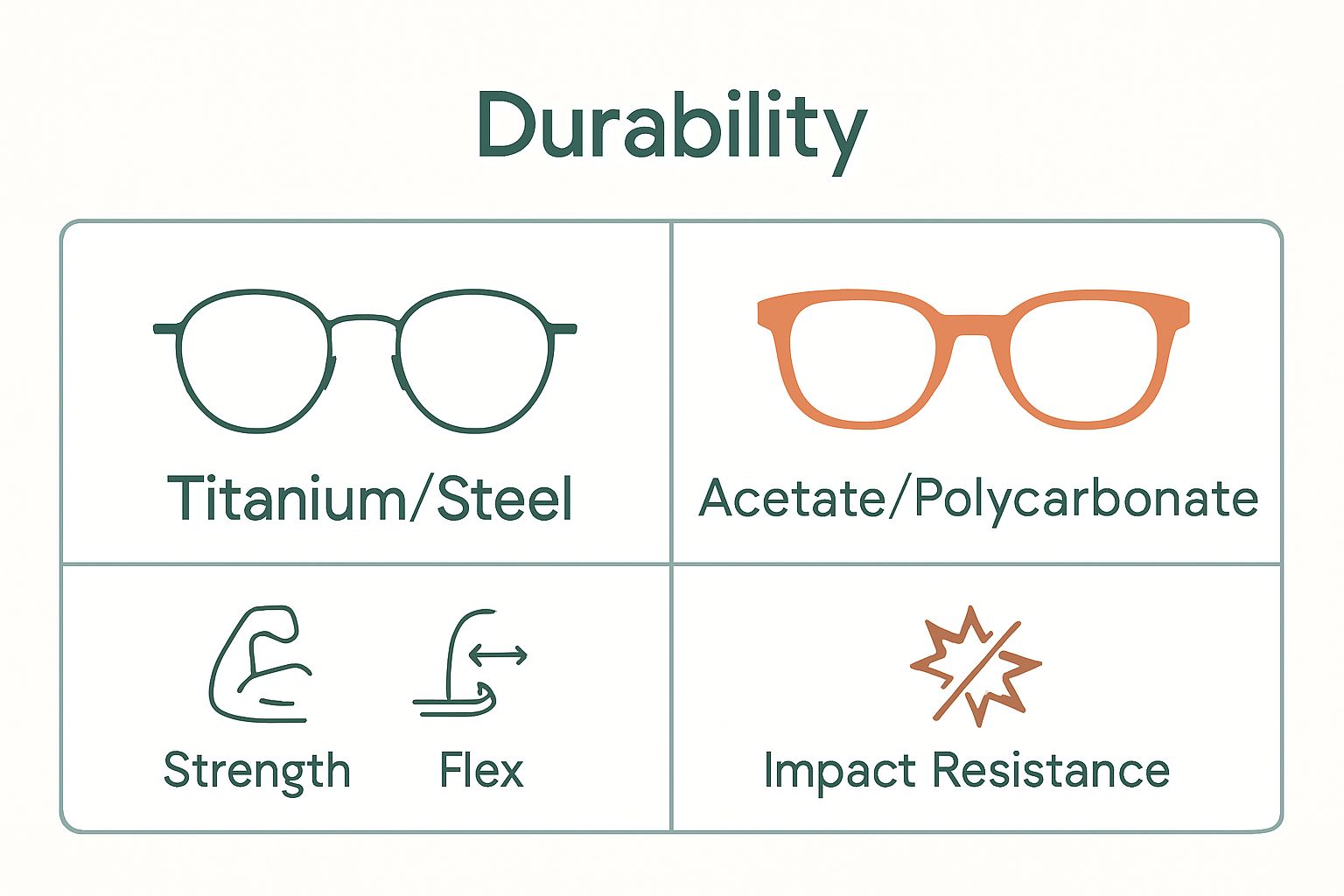
Frame Material Strength
Quality reading glasses require frames that can resist bending, breaking, and environmental stressors. Manufacturers typically utilise materials like titanium and stainless steel, which provide exceptional strength without adding significant weight. These metals are renowned for their flexibility and corrosion resistance, making them ideal for everyday eyewear.
Polycarbonate and acetate have also emerged as popular frame materials. Acetate, in particular, offers remarkable durability and can read more about frame material choices, with the ability to maintain shape and resist impact.
Lens Material Performance
Lens durability involves more than just scratch resistance. Modern reading glasses incorporate advanced materials that provide multiple protective features. Polycarbonate lenses, for instance, deliver superior impact resistance and ultraviolet protection. These lightweight materials can withstand accidental drops and everyday handling without compromising optical clarity.
Key characteristics of durable lens materials include:
- High impact resistance
- Scratch-proof coatings
- Lightweight composition
- Resistance to thermal variations
By selecting glasses constructed with robust materials, you ensure a product that remains functional and aesthetically pleasing through years of regular use. The right combination of frame and lens materials transforms reading glasses from simple vision correction tools into reliable, long-lasting accessories.
To help you evaluate which frame and lens materials are best suited for durability in everyday glasses, the table below compares the key characteristics of the main options discussed.
| Material | Common Use | Strength & Durability | Weight | Special Strengths |
|---|---|---|---|---|
| Titanium | Frame | Exceptional strength, flexible | Very lightweight | Corrosion resistant, great for all-day wear |
| Stainless Steel | Frame | Strong, resists corrosion | Lightweight | Holds shape, withstands wear |
| Polycarbonate | Frame & Lens | Highly impact-resistant | Lightweight | UV protection, shatter-resistant |
| Acetate | Frame | Durable, maintains shape | Moderate | Impact-resistant, wide colour range |
| Polycarbonate | Lens | Superior impact resistance | Lightweight | Scratch-proof coatings, UV blocking |
Understanding Lens Coatings and Their Benefits
Lens coatings play a pivotal role in transforming standard reading glasses into highly functional and protective eyewear. These sophisticated protective layers enhance visual performance, durability, and comfort, addressing multiple challenges encountered during everyday use.
Types of Protective Lens Coatings
Modern lens coatings offer multifunctional protection beyond basic optical clarity. Anti-reflective coatings reduce glare and light reflection, improving visual comfort in various lighting conditions. Scratch-resistant coatings create a hard, transparent layer that prevents surface damage from daily handling and environmental interactions.
Ultraviolet protective coatings represent another critical advancement, blocking harmful radiation that can damage eye health. learn more about lens types and their protective features, these coatings provide an invisible shield against potential long-term eye damage.
Performance and Practical Benefits
The practical advantages of advanced lens coatings extend far beyond simple protection. These microscopic layers dramatically improve the overall functionality of reading glasses. Key benefits include:
- Enhanced visual clarity in different light environments
- Extended lens lifespan through superior protection
- Reduced eye strain from glare and reflection
- Improved aesthetic appearance with reduced surface reflections
By selecting glasses with comprehensive lens coatings, users gain a sophisticated visual tool that adapts to diverse environments while maintaining exceptional durability and performance. The right coating can transform an ordinary pair of reading glasses into a resilient, high-performance accessory that supports clear vision and eye health.
Below is a summary of the most common lens coatings found on durable reading glasses, detailing their purpose and the main benefits for everyday use.
| Coating Type | Main Purpose | Everyday Benefit |
|---|---|---|
| Anti-reflective | Reduces glare and reflections | Clearer vision, less eye strain, improved aesthetics |
| Scratch-resistant | Prevents surface scratches | Lenses last longer, clearer optics remain intact |
| Ultraviolet (UV) protection | Blocks harmful UV radiation | Protects eye health, prevents potential long-term damage |
The Role of Frame Design in Durability
Frame design represents a crucial factor in determining the overall resilience and longevity of reading glasses. Beyond material selection, the structural configuration plays a significant role in how well glasses withstand daily challenges and potential impacts.
Structural Integrity Factors
The architectural approach to frame design directly influences durability. Full-rim frames provide comprehensive lens protection by encasing the entire lens edge, reducing vulnerability to accidental damage. Rimless and half-rim designs, while aesthetically appealing, typically offer less structural protection. explore more about frame material choices, understanding the nuanced differences becomes essential for selecting robust eyewear.
Hinge and Joint Engineering
Advanced frame designs incorporate sophisticated hinge mechanisms that significantly enhance durability. Spring hinges represent a technological innovation, allowing frames to flex and absorb stress without permanent deformation. These flexible joints reduce the likelihood of breakage during accidental drops or when glasses are frequently put on and removed.
Key considerations in frame design durability include:
- Precision engineering of joint connections
- Flexibility of material at stress points
- Distribution of mechanical stress across the frame
- Resistance to metal fatigue and repeated bending
By prioritising intelligent frame design, manufacturers create reading glasses that seamlessly blend structural strength with aesthetic appeal. The right design transforms glasses from simple vision correction tools into resilient accessories capable of withstanding the rigours of everyday use.
How Care and Maintenance Affect Glass Longevity
Proper care and maintenance are fundamental to preserving the durability and performance of reading glasses. While high-quality materials and advanced design contribute significantly to longevity, user practices ultimately determine how well glasses maintain their original condition over time.
Cleaning and Handling Techniques
The way glasses are cleaned and handled directly impacts their structural integrity and optical performance. Microfibre cloths represent the gold standard for lens cleaning, removing dust and smudges without introducing scratches or damaging protective coatings. Harsh materials like paper towels or clothing can cause microscopic abrasions that gradually compromise lens quality. discover more about protecting your reading glasses, understanding gentle cleaning techniques becomes crucial.
Storage and Environmental Considerations
Environmental exposure and storage practices play a significant role in glasses durability. Extreme temperatures, direct sunlight, and high humidity can degrade frame materials and lens coatings over time. Protective cases with soft interiors provide essential protection when glasses are not in use, preventing accidental scratches and minimising structural stress.
Key factors influencing glasses longevity include:
- Consistent gentle cleaning practices
- Using appropriate protective storage
- Avoiding extreme temperature variations
- Regular professional adjustments and maintenance
- Minimising exposure to harsh chemicals
Thoughtful maintenance transforms reading glasses from fragile accessories into long-lasting vision correction tools. By implementing systematic care routines, users can significantly extend the functional lifespan of their eyewear, ensuring optimal performance and appearance for years of reliable use.
Understanding the aspects of care and maintenance can help you maximise the lifespan of your glasses. The table below outlines key practices and their impact on durability.
| Practice | How it Works | Benefit to Durability |
|---|---|---|
| Use microfibre cloths | Cleans softly without scratching lenses | Prevents micro-abrasions and coating damage |
| Store in protective case | Shields glasses from accidental impacts | Reduces risk of bending, snapping, or scratches |
| Avoid extreme temperatures | Prevents material and coating breakdown | Maintains frame integrity and lens clarity |
| Professional adjustments | Maintains correct alignment and fit | Prevents loose parts and ensures safe wear |

Discover Everyday Durable Glasses Made for Real Life
Are you tired of reading glasses that bend out of shape or fail to stand up to daily use? If you value strong frame materials, smart lens coatings, and well-designed hinges that give lasting performance, you are in the right place. At Ministry of Sight, your everyday challenges are met with Australian comfort and style. Check out our collection of Geometric Reading Glasses built with premium materials and thoughtful design. Protect your investment further with our range of Reading Glasses Accessories and Storage to keep your eyewear at its best.
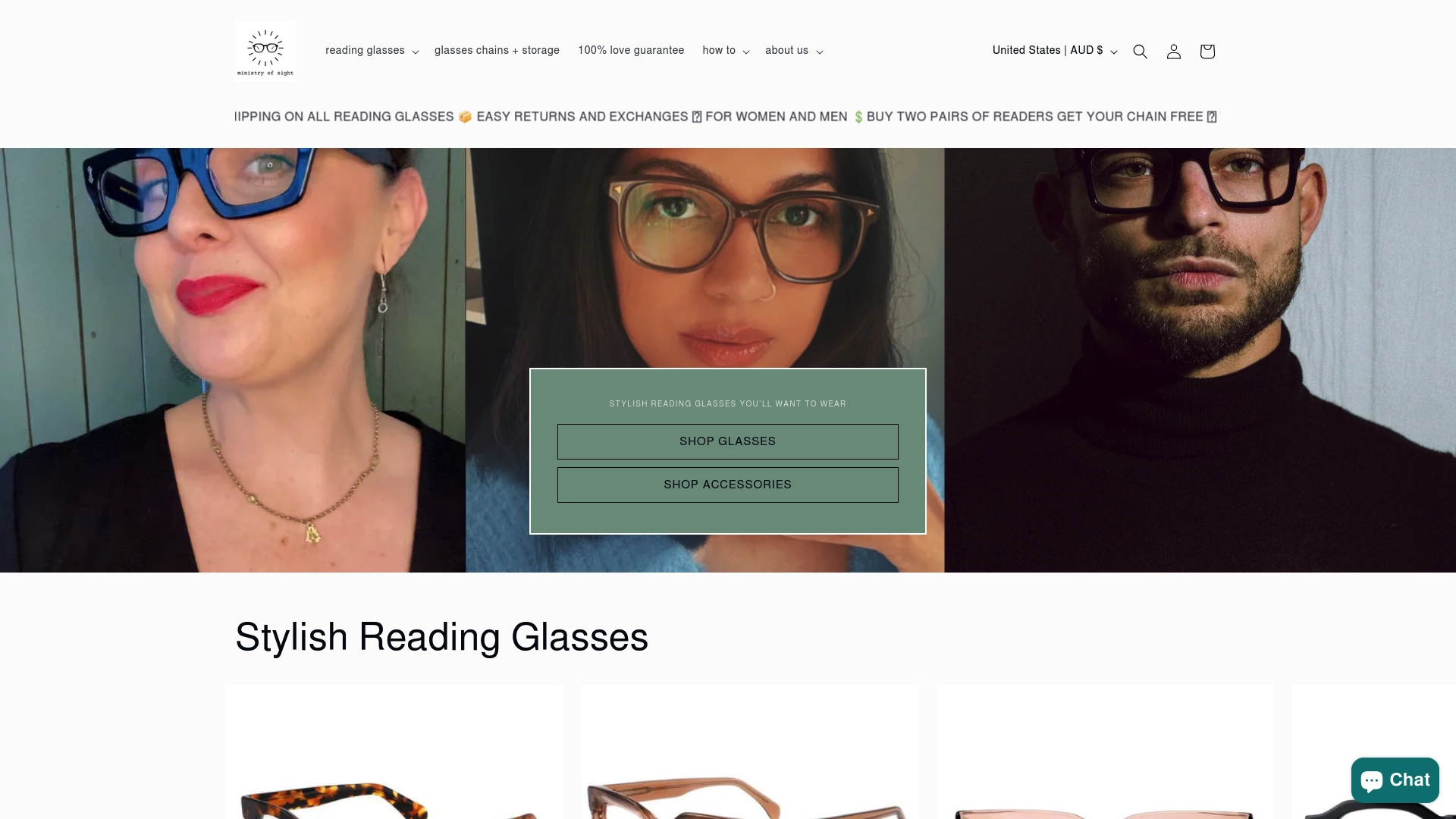
Choose glasses that last by visiting Ministry of Sight now. Experience a higher standard of durability that let you focus on your day, not your glasses. Don’t wait to get the comfort and resilience your eyes deserve.
Frequently Asked Questions
What materials are best for durable glasses frames?
Manufacturers often use titanium, stainless steel, polycarbonate, and acetate for glasses frames. Titanium and stainless steel provide exceptional strength and flexibility, while polycarbonate and acetate offer durability and impact resistance.
How do lens coatings enhance the durability of glasses?
Lens coatings like anti-reflective and scratch-resistant coatings protect the lenses from glare, scratches, and environmental damage, significantly extending the lifespan and functionality of the glasses.
What design features contribute to the durability of reading glasses?
Key design features include full-rim frames for comprehensive lens protection and advanced hinge mechanisms like spring hinges that allow for flexibility and reduce the likelihood of breakage during everyday use.
How can I properly care for my reading glasses to ensure longevity?
To care for your reading glasses, use a microfibre cloth for cleaning, store them in a protective case, avoid extreme temperatures, and have them professionally adjusted as needed to maintain structural integrity.


